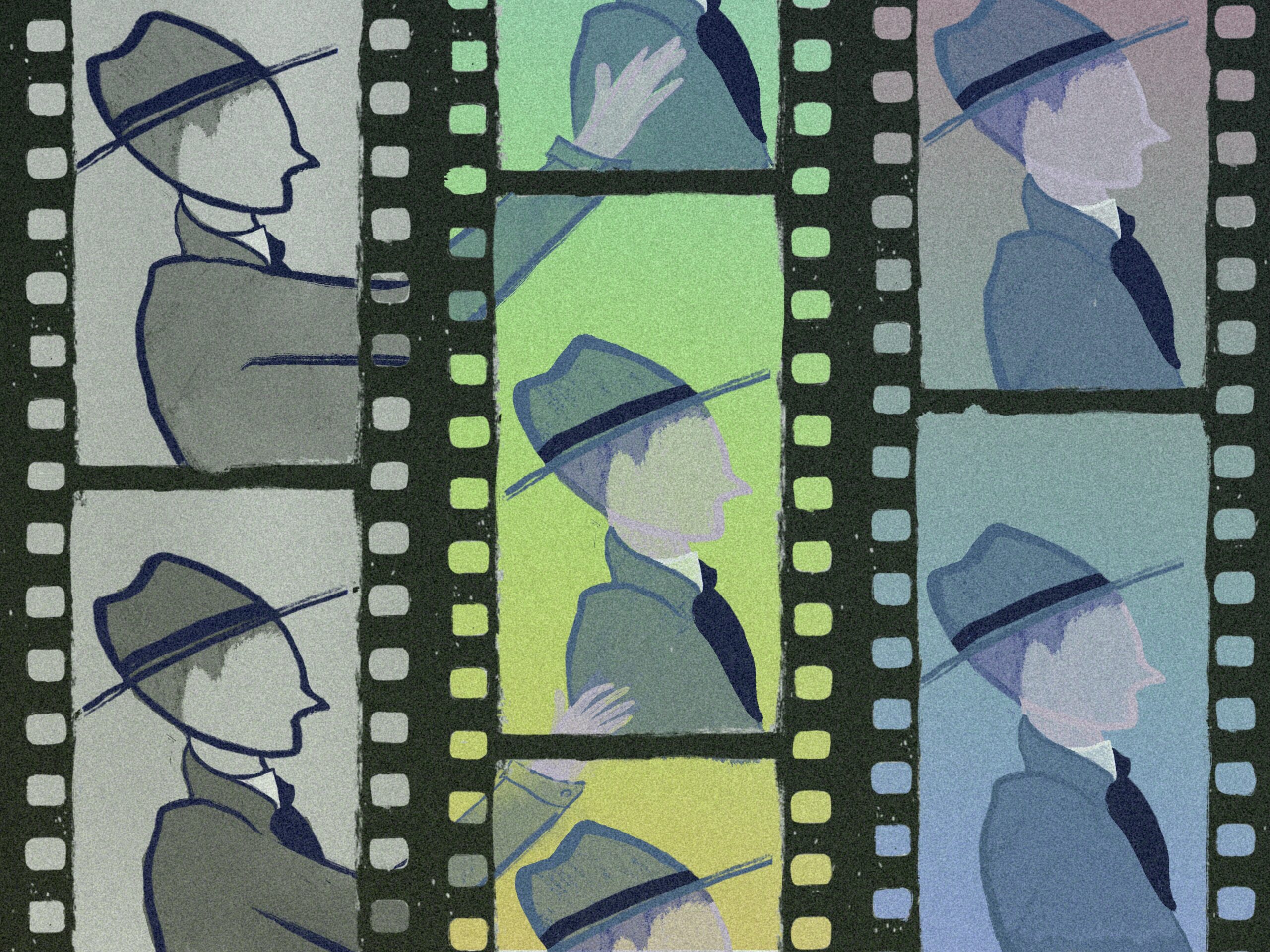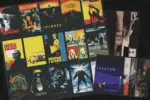Exploring an old film technique: How and why are filmmakers using the black & white filter again?.
Picture this: It’s 1939 and you’re sitting in a movie theater seat lit by a monochrome, light brown light projected onto a big screen. You’re captivated, watching a girl from Kansas struggle to stabilize herself as her house is spun round and round by a tornado. As the house mysteriously lands on the ground and stops moving, she opens the front door and you’re suddenly, triumphantly immersed into a wonderfully whimsical world of technicolor.
Now imagine the opposite: full color to monochrome black and white.
If you’ve experienced this, you know well enough that it’s a curious sensory shift. It’s curious for two main reasons: the first and perhaps most obvious one is that our hyper-stimulated 21st-century eyes simply aren’t accustomed to seeing the world in simplified black and white. The second reason is that limiting the color spectrum allows for a distinctive visual change in the audience’s attention. This is, perhaps, distinctly the reason why filmmakers are becoming increasingly interested in the B&W ‘filter’ as a stylistic and narrative element in their story-telling. When a film lowers its saturation to -100 %, the human eye can’t focus on color differences anymore; instead, focusing on light and dark. The eye doesn’t concentrate on color hue, temperature or even value, but on shadows, shapes, textures, outlines and contrasts. Attention becomes centralized on the figures and stark shadows instead of the overall environment, allowing filmmakers to further emphasize composition and framing — even more so than with full color.
Within the past few years, there’s been a slight yet notable reemergence of this technique in mainstream movies. Filmmakers are presently purposefully choosing to switch between fully colorized and monochrome black-and-white imaging. Some instances of B&W use in recent films include 2022’s “Thor: Love & Thunder,” 2023’s “Oppenheimer” & “Maestro” and the newly released “Dune: Part Two”; all of which have utilized the shift between color and B&W in various ways, both narrative and aesthetic.
Although an objectively mediocre film, “Thor: Love and Thunder”’s use of the B&W filter is narratively significant and – considering the series’ inconsiderate filmmaking – a noteworthy step in the right direction. As the film’s protagonists sail their mystical boat through the cosmos and into the antagonist’s symbolic colorless world, the universe’s color slowly yet surely fades and nearly everything becomes black and white (except for a few key items we’re cued to follow). The evident turn to such high contrast makes the viewing experience somewhat jarring and the would-be emotionless, lonely moon-like surface of the planet appears harsh and unfriendly to the characters on the screen and the audience alike.
The unserious writing of the film unfortunately takes away from the impact of the technique’s usage here, but it still achieves what it was meant to accomplish. The thematic and emotive contrast between the previously lighthearted moments in the story — where the “good guys” were winning — and this new stretch where the villain takes control of the narrative — rendering the heroes helpless as he taunts them with psychologically intrusive comments — is made that much clearer and pervasive, indicating the clear plot shift. The cinematographic technique is used here purely to further the narrative, but it still creates an interesting visual effect. The antagonist’s white cloth clothing starkly contrasts the dark and unforgiving environment engulfing the mildly lit heroes. Another use of the technique is employed in Christopher Nolan’s monumental biographical thriller film “Oppenheimer”.
In “Oppenheimer”, Nolan employs the specialized B&W Kodak IMAX film reel to reference the various jumps in the film’s timeline throughout. The story itself deals with the life and work of American theoretical physicist and maker of the atomic bomb Dr. J. Robert Oppenheimer. Nolan approaches this biographical narrative through a parallel between the court proceedings – in which Oppenheimer’s case is being reviewed – and the background story to the proceedings.
Nolan utilizes B&W in the court scenes throughout the film to both aid the viewer in distinguishing between the different narratives within the story and to reference the old B&W clips of the actual Robert Oppenheimer speaking, further adding a layer of self-reflexivity to the film. Nolan is able to jump back and forth between the two narratives because of the difference between the B&W and color visuals. Through contextual clues and B&W only being used in scenes of the legal procedures after the story (which is presented in color), the audience is cued to note this difference early on. This furthers the narrative importance of the scenes in full color — those are the ‘flavor’ of the film’s main historical plot, the background story behind the legal procedure — and amplifies the already-profound intellectual and emotional impact of the dramatic colorized final scene.
Bradley Cooper’s biographical drama “Maestro” is another historical film that employs B&W, but it does so more subtly and somewhat similarly to “The Wizard of Oz.” The film’s story begins in B&W and becomes colorized later on — around 47 minutes or a third of the way in, once the relationship issues between the main characters begin. B&W is used here to display the growing emotional distance between the two main characters; husband and wife.
The sudden change to color accentuates this shift in the characters’ relationship dynamic as the man (Bradley Cooper’s character) commences his increasing involvement in extramarital flings. Regarding other effects of the colorization from B&W, the shift to color not only symbolizes the male protagonist’s shift to a more colorful romantic life but becomes even more aesthetically pleasing to watch. One can note, then, how the cinematographic technique of the color shift can have simultaneous narrative and aesthetic uses.
Most recently, Denis Villeneuve’s booming sequel to his 2021 megahit “Dune: Part One”(based off the Frank Herbert’s novel), “Dune: Part Two”, also chose to utilize the B&W technique narratively. Mild spoiler warning, but in the story, the antagonist’s world appears similar to the “Love and Thunder” antagonist’s: colorless and unrelentingly disagreeable. The harsh contrast between smooth whites and stark blacks makes the viewing experience unpleasant as inhuman images of humanoid creatures’ distressing features (pale white, eerily flawless skin contrasted with twisted glossy black teeth and soulless, staring gray eyes) are displayed. The black and white of the figures seen further accentuates the feeling of these being detached from human beauty and emotion — everything is black and white, one or the other — as is fitting to their species’ violent emotionless nature. The technique is used masterfully here, and it shows promise for what else it can yield in future films.
Perhaps the reason why the usage of B&W feels fresh is that filmmakers are still using modern technology and film techniques, yet they’re using it in a way that almost explicitly alludes to the original monochrome aesthetics of the film medium. The effect that this visual shift brings to the viewer’s theater experience will likely be further explored in the coming years. It achieves something Film Noir did without the entire film having to be moody and cynical. The visual shift gives the audience a greater awareness and appreciation for the full-color media. Having purely B&W or purely color simply cannot have such an effect. The absence of one facet makes the sudden presence of it that much more profound.
It inflicts more potent strength of emotion and vivacity. Such exploration in film technique is just the beginning. Filmmakers are attempting to reinvigorate the film industry’s dwindling movie-going audience as the war against streaming platforms is ever-growing. This need for innovation will hopefully push current filmmakers and pioneers in the industry into uncharted territory, leading the audience into a new age of film.

















